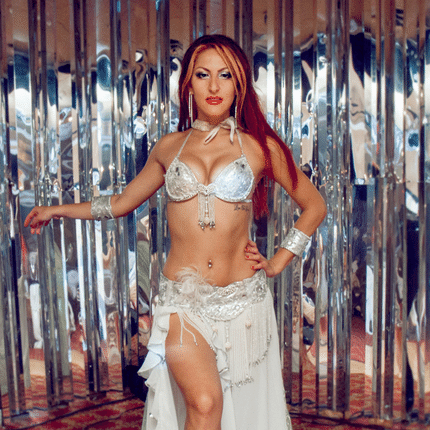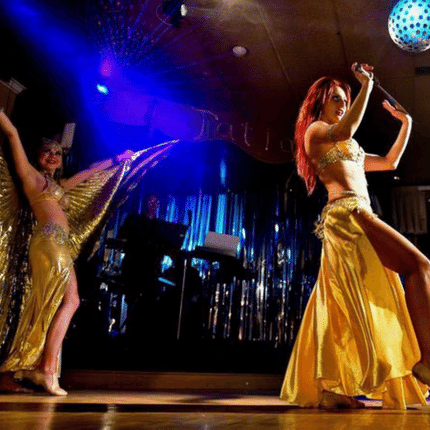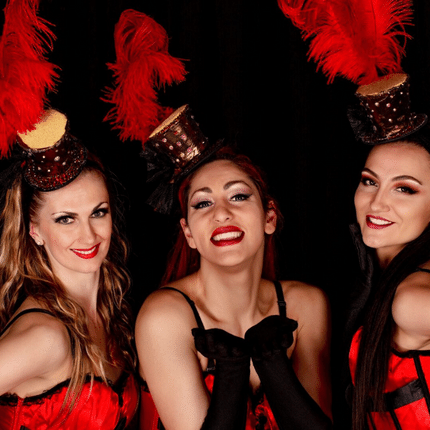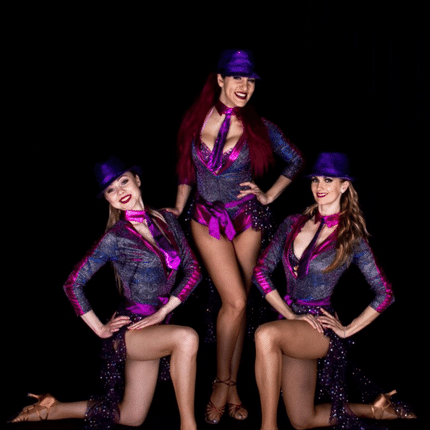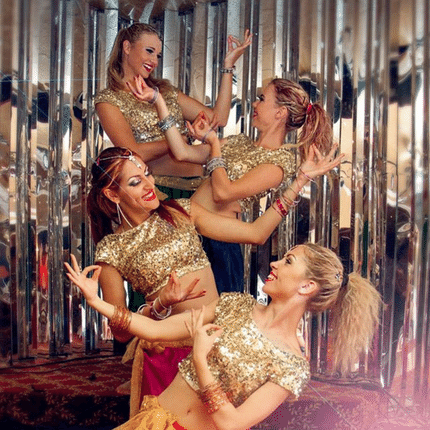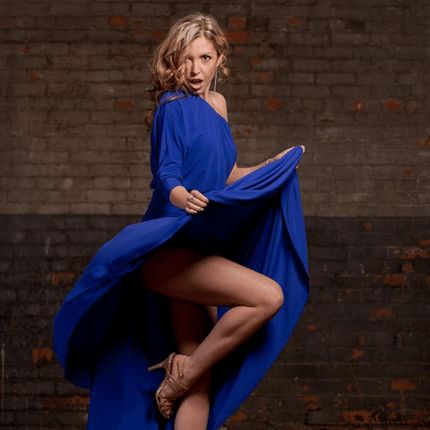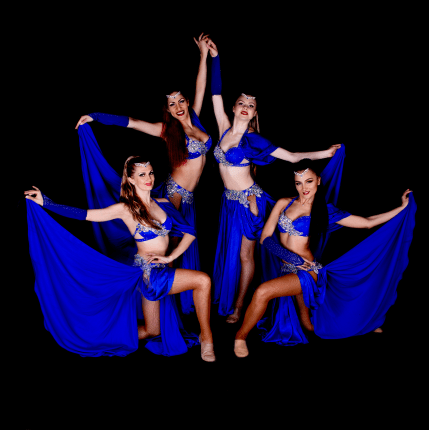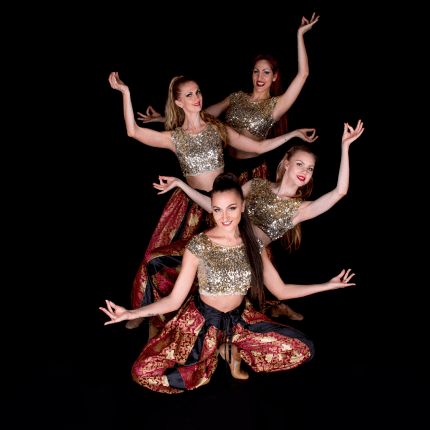The Dance Awards
The Canadian Dance Awards, an esteemed celebration of dance excellence, showcases the remarkable talent and dedication of participating dancers across the nation. This prestigious event recognizes and honors the extraordinary achievements of dancers who have captivated audiences with their exceptional performances and artistic finesse.
From Ballet, jazz, contemporary to hip-hop, these dance awards encompass a myriad of dance genres, which shows the innovation and vibrancy within the Canadian dance community. At the very heart of this event, lies the pursuit of excellence. Dancers compete to achieve the highest scores and gain the high gold prize.
With every dance piece, the stage turns into a canvas for dancers to show all their passion and skill, leaving the audience without words. They proudly bestow recognition upon those who have pushed the boundaries of their craft, with exceptional dancers being awarded the highest accolades.
It is a platform that not only recognizes extraordinary achievement but also inspires future generations of dancers to strive for greatness and embrace the art form with unwavering dedication.
Age Divisions
- Peewee: 5-7 years old
- Mini: 8-10 years old
- Junior: 11-12 years old
- Teen: 13-15 years old
- Seniors: 16-19 years old
- Open: 20+ years old
Groups Types
- Solo
- Duo/trio
- Small group (ranges from 4 to 9 dancers)
- Large group (ranges from 10 to 15 dancers)
- Production (ranges from 16 to more dancers)
Performance divisions
Jazz: this division is set to lively and uptempo music, highlighting and focusing on jazz technique. The dancer’s show their skills using the energetic movements and captivating choreography that characterizes jazz so much.
Ballet: it features routines that showcase the skill, artistry and expertise on the pointe technique. The dancers give a wonderful showcase of their mastery of classical movements and steps, infused with the artistry that divides ballet and acrobatics; along with the embodiment of grace and precision.
Hip-Hop: this division is an entertaining showcase of the mastery and skill needed for hip-hop technique, as this urban dance requires intricate footwork, locking, popping and all the elements of this dance.
Tap: this category focuses on the intricate choreography and rhythmic footwork of tap dancing, but it’s important to note that routines that highlight ans showcase the clogging technique and style shouldn’t compete in this category.
Contemporary: it explores and focuses on the fusion of various jazz styles, emphasizing on modern technique. Dancers blend fluidity, athleticism and emotion to create alluring and bewitching performances.

Lyrical: Lyrical routines combine jazz and ballet techniques with slower music that allows for emotional expression and storytelling. Dancers convey their feelings through fluid movements and interpretive choreography.
Musical theatre: this category encompasses routines that interpret songs from Broadway or movie musicals. Dancers bring characters to life through their performances, incorporating elements of acting, singing and dancing.
Ballroom Dancing: The ballroom dancing category includes routines that showcase traditional or Latin techniques from the ballroom dance repertoire. Dancers demonstrate their dexterity, partnering skills and musicality in captivating performances.
Specialties: The specialty category includes all other dance styles and themes that do not fit into existing categories. This can encompass ethnic dances, novelty routines, clogging, etc., allowing for unique and diverse performances.
Acro: Acrobatic dance combines dance and acrobatic tricks, drawn from various circus traditions from around the world. Dancers showcase their balance, flexibility, power and seamless integration of acrobatics into their choreography.
Exhibition: The exhibition division is designed for those participants who wish to perform solely for critique and feedback, without receiving scores or being eligible for adjudication or top-scoring awards. It offers dancers the opportunity to gain valuable feedback and improve their skills.
Improvisation: In the Improvisation category, dancers create and execute movements spontaneously, without premeditated choreography. Participants do not know the song that will be played, as the DJ selects it at random. Improvisation routines are limited to a maximum duration of 2 minutes and 30 seconds, which challenges dancers to show their creativity and adaptability on the spot.
Pre-Qualifying Competition
A Pre-Qualifying Dance Competition is an event where dancers showcase their skills and talent to earn a spot in the main competition. It serves as a preliminary round, allowing dancers to demonstrate their abilities and impress the judges. Participants go through rigorous training and preparation to present their best performances.
The competition focuses on various dance styles, including contemporary, hip-hop, ballet, and more. Dancers are judged on technique, choreography, stage presence, and overall artistic expression. Successful performers from the pre-qualifying round move on to the main competition, where they have the chance to compete against other top dancers and vie for prestigious titles and recognition.
The Dance Canada Awards
The Canadian Dance Awards, while distinct in their focus and purpose, are also part of the regional competition under the umbrella of the American Dance Awards. As a regional component, the Canadian Dance Awards provide Canadian dancers with an opportunity to participate in a larger platform that encompasses the American dance scene and touring in recognised places of dance competitions like Las Vegas.
This integration allows Canadian dancers to showcase their talents and compete alongside their American counterparts. While maintaining their unique identity and recognition of Canadian achievements, the Canadian Dance Awards benefit from the broader exposure and competitive spirit that comes with being part of the regional competition of the esteemed American Dance Awards.
The dance awards places loyalty and honesty among their highest values. To ensure a fair and supportive environment, they have strict guidelines in place regarding solicitation of dancers from other studios during the events. Teachers or studio owners are strictly prohibited from engaging in such practices.
In the event of a first offense, a warning will be issued as a reminder of the policies. However, if any subsequent offenses occur, the studio in question will regrettably not be allowed to attend any future showcases.

Finals Competition
The Finals Competition in Dance is the culmination of hard work and dedication by dancers who have successfully made it through the pre-qualifying rounds. This event brings together the crème de la crème of the dance community to compete for top honors. Dancers from various studios and backgrounds come together to showcase their talent and artistry on a grand stage.
The Finals Competition is a display of exceptional skill and technique. Each routine is carefully choreographed and executed with precision. Judges evaluate dancers based on their ability to meet the same high standard set by the competition. Scoring is based on factors such as technique, musicality, creativity, and stage presence. Dancers strive for high scores, aiming to stand out amongst the fierce competition.
In addition to solo performances, the Finals Competition also features group routines. These captivating performances showcase synchronized movements and breathtaking formations. Dancers from the same studio come together to present cohesive and visually stunning pieces. The careful coordination of costumes, lines, and formations adds an extra layer of artistry to the performances.
For dancers, the Finals Competition represents the pinnacle of their hard work and the validation of their skills. It is an opportunity to shine on stage, celebrate the performing arts, and inspire others with their dedication and passion. Those who qualify for the Finals Competition have already achieved a significant milestone, and this event serves as a grand finale to their journey.

Finals High Score Awards (by age division)
At the exhilarating culmination of the competition, the Finals High Score Awards take center stage, organized by age division. This prestigious recognition pays tribute to the remarkable talents and unwavering efforts displayed by the young performers.
With eager anticipation, each age group is honored individually, thought judged by the same standard, ensuring fairness and acknowledging their distinct skills. From the youngest participants, whose budding potential leaves audiences in awe, to the seasoned teenagers who showcase their mastery, every age division holds its own significance.
The Finals High Score Awards aim to not only highlight technical proficiency but also the depth of emotions and artistic expression demonstrated by these exceptional individuals. The dedication, creativity, and sheer passion of each performer are acknowledged and celebrated throughout the grand ceremony.
The Stage
The Dance Awards will showcase its captivating performances on a main stage measuring 47' wide by 30' deep, providing ample space for dancers to showcase their talent. Additionally, the stage design ensures sufficient wing space alongside the width, allowing for smooth transitions and preparations.
Etiquette Guidelines:
Backstage
Backstage Access: Only dancers accompanied by their teachers will be permitted backstage. Access will be granted exclusively to dancers participating in the competition during the specified time frame.
No Spectating in the Wings: To maintain a focused and distraction-free environment, sitting in the wings to watch dancers on stage is not allowed. All attention should be directed towards the performers on the main stage.
Venue Conduct
Cleanliness: It is expected that everyone makes a conscientious effort to clean up after themselves. Maintaining cleanliness contributes to a pleasant and organized atmosphere.
Respect for Property and Rules: Please show respect for the venue's property and adhere to all rules and regulations set forth by the organizers. Respecting the venue ensures a harmonious and cooperative experience for all participants.
Sportsmanship
Possibly the most critical aspect, sportsmanship is of utmost importance. All individuals, including dancers, teachers, and parents, are expected to conduct themselves in a sportsmanlike manner at all times. Embracing the principles of fair play, respect, and support enhances the overall spirit of the event and fosters a positive environment for everyone involved.


